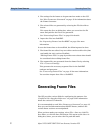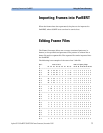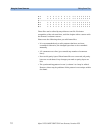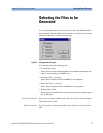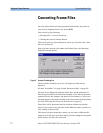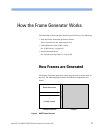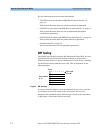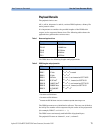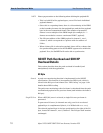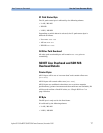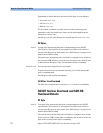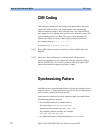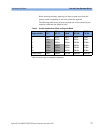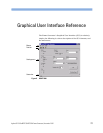
How the Frame Generator Works How Frames are Generated
16 Agilent 81250 ParBERT SONET/SDH Frame Generator, November 2002
NOTE Please pay attention to the following when defining the payload fill.
• This is a bulk fill of the payload space, not a fill of each individual
payload channel.
• Since this is a repeating frame, there is a discontinuity of the PRBS
at the boundary between the last payload byte and the first payload
byte in the next transmitted frame if the number of generated
frames is not a multiple of the PRBS length (for example, 2
7
– 1
frames are needed to create a continuous PRBS 7 payload).
• The fill start address of the PRBS payload is channel 1, row 1,
column 5, which corresponds to a pointer with the address of
522
Dec
.
• When a binary file is selected as payload, there will be a chance that
the synchronizing pattern for the ParBERT appears also within the
payload. If so, the ParBERT will not be able to synchronize.
SONET Path Overhead and SDH HP
Overhead Details
This section describes how the path overhead is handled (and
manipulated) with the application.
B3 Byte
General A path error monitoring function is implemented in the SONET
specification. This function is incorporated as BIP-8 code, which is
stored in the B3 byte of each frame. See “BIP Coding” on page 14 for
details about BIP-8 coding.
The path error monitoring code of a frame is calculated from the path
overhead and payload of the previous frame (and includes the frame’s
B3 byte).
Single B3 Error When a BIP (B3) error is selected, a single B3 error per frame is
generated.
To generate a B3 error (in channel one only), one bit in a selected
payload byte is complimented (that is, it is XORed with
0000 0100
).
The selected payload byte is the byte positioned to the right of the B3
byte, located at channel 1, row 6, column 5. The B3 byte itself remains
unchanged.



